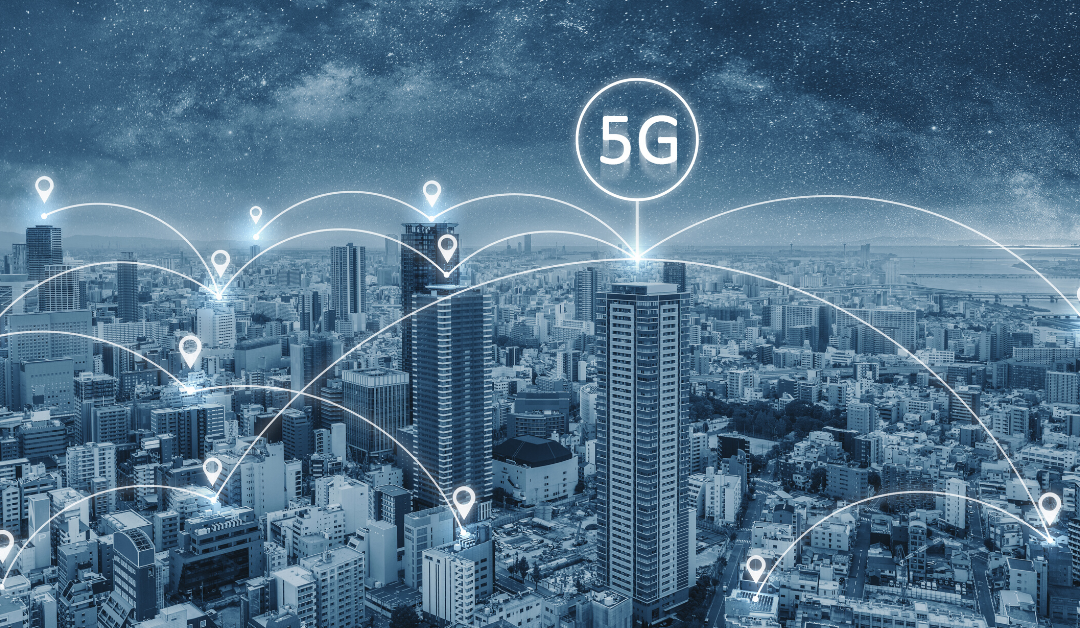It’s taken over a decade, but 5G is slowly becoming a reality. A few years ago, select cities in the United States began rolling out fixed 5G with mobile 5G right behind it. This is the next generation of mobile broadband that will replace (or at least augment) the current 4G LTE connection.
As 5G continues to be implemented, exponentially faster download and upload speeds will become the norm. Latency will all but disappear and everything will be transferred and viewed in real-time. The possibilities of this technology are endless. The shift to 5G, shown in just a few examples, will impact the way we interact and use technology on a daily basis. This blog is the first of a series that will do a deeper dive into just a few aspects of how this next-generation technology will change the world.
What Can 5G Do?
Public Safety
As the technology advances, 5G will allow cities to operate more efficiently and intelligently. For example, Public Works companies will be notified if street lights go out, or if there is a sudden problem with the power grids, and monitor traffic in real-time. These are just glimpses into the capabilities 5G can offer cities.
Self-Driving Vehicles
Once 5G is fully deployed, more self-driving cars will be seen across the country. Cars will be able to seamlessly communicate with other vehicles on the road, send updates about road conditions, detours and accidents. Vehicle-to-vehicle communication has the potential to save a lot of lives.
Healthcare
5G, with its ultra-reliable low latency communications (URLLC) component, could fundamentally change healthcare. With enhanced mobile broadband, there will undoubtedly be improvements in remote recovery, precision surgery, VR physical therapy, and telemedicine.
With COVID-19 on everyone’s minds, telemedicine is a small but important part of how impactful 5G can be for healthcare. Using 5G, medical professionals will rely on consistent, high-quality video streaming to accurately assess and diagnose patients remotely, significantly improving regional access to quality medical care. During the coronavirus outbreak in China, this use of 5G technology allowed medics outside of Wuhan to identify X-ray and CT scans to help relieve the diagnostic burden on local medical staff. As an added benefit, it reduced the number of people being brought into contact with the disease.
A new whitepaper was developed by Chinese tech giant Huawei and advisory and audit firm, Deloitte, who laid out the potentials of utilizing SMART robotic technology in healthcare. Through 5G, the robots would be able to check temperatures, deliver medication, disinfect rooms, and more. This would allow an even lower amount of human exposure to COVID-19 or any other virus in the future. Smart hospitals are also on the horizon, allowing real-time information to be shared among staff so that personnel are being used where they are needed most.
Education
Due to COVID-19, the shift to remote working and homeschooling is stressful, but necessary. However, next-generation technology can relieve some of the burden. New solutions are being developed to help students feel more immersed in their remote classroom. Virtual and augmented reality in addition to holography promises a more interactive experience. In some aspects, this way of learning is far more stimulating and can improve the hands-on learning experience over what students would have received in the classroom.
2020 was set to be “the year of 5G.” While the coronavirus pandemic has significantly shifted society, it’s also encouraging people to reappraise how technology is used. What is certain is that the necessities posted by COVID-19 have opened the door for all of the possibilities of 5G. We may be on the edge of an explosion in next-generation technology.

